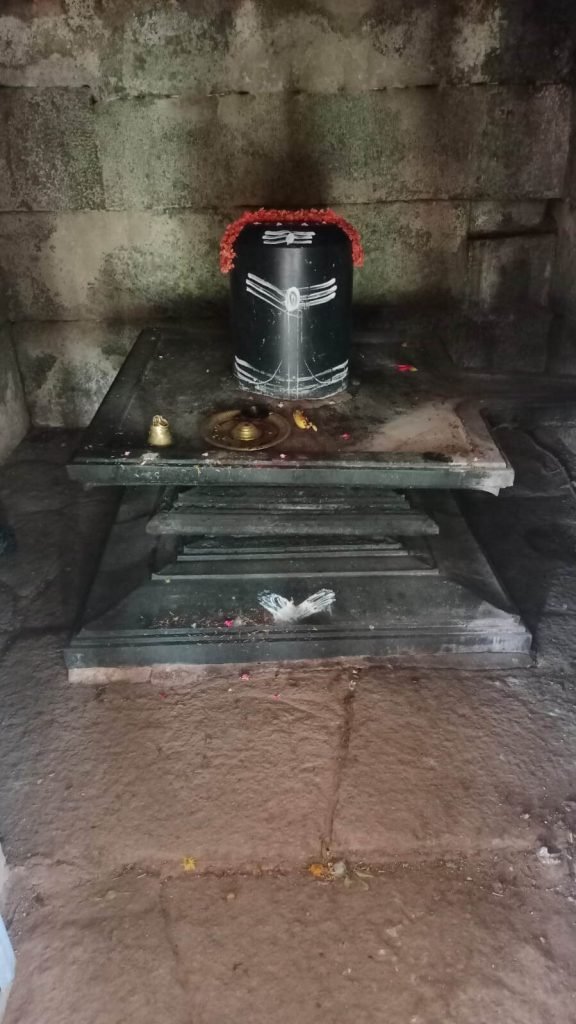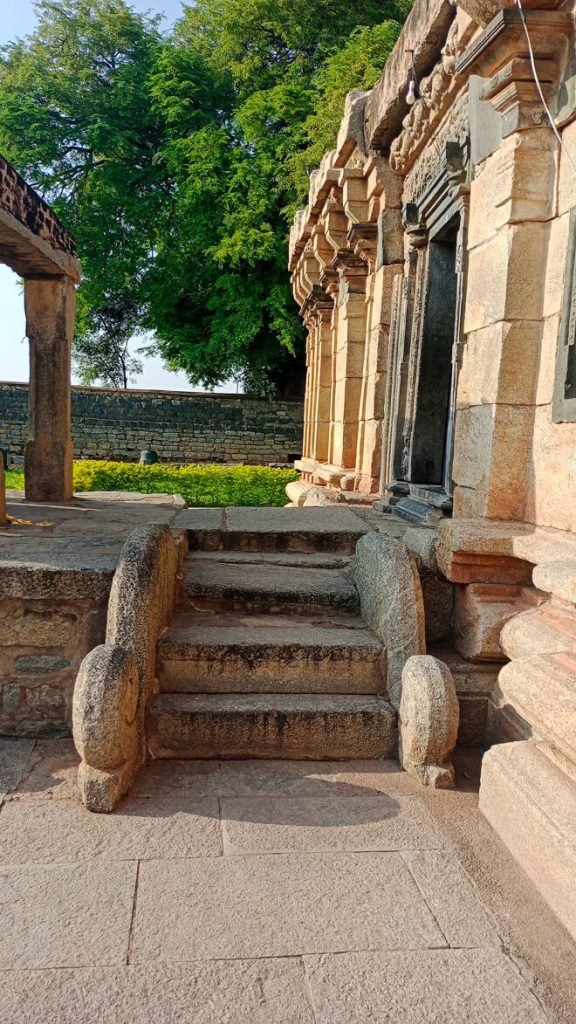sri sri sri
Virupaksheswara Temple
The Virupaksheswara temple is the wonderful stone block on the right side of the front of the Doddeswaraswamy temple. The shape of the pillars and the structure of the walls impress the viewers.
If you touch the Nandi in the mandapam in the entrance opposite to the Shivalinga, you will hear the sound of Dhan, Dhan mane. The Nalambarajya was the amalgamation of the great kings and skillful sculptors of that time.
The temples built during the time of Nolambarajas are Hemavathi, Avani (Karnataka), Nandi (Karnataka), Dharmapuri (Tamil Nadu) and the famous temples are still standing today. The Lakshmanneswara temple in Avani is comparable to the Doddeswara temple in Hemavati. The walls of the temple room are decorated with windows and niches and the Nigras of the Ashtadikpalakas are embedded in them. Bharateshwara, Anjaneswara and Satbhughneswara temples are located within the premises of Lakshmanjeswara temple.
Nandi (Karnataka) is home to Bhoganandiswara, so the name Nandi settled on the area. Arunachaleswara temple is also located in Nandi.
Kamakshamma and Mallikarjuna temples can be found in Dharmapuri. During their time, Nandu Basavanna Temple in Tadakaluru Shira Taluk of Karnataka was built. And it is believed that Bhairaveswara Swami, who is considered to be the younger brother of Hemavati Siddeshvara in Siddappa Temple of Vadikere (Hiriyur – Karnataka), may have been moved from Hemavati and enshrined.
An ancient pond in Hemavati is known as ‘Henjeru Pond’. The ancient names of Hemavati are Penjeru and Henjeru. And Penjeru means “Penu + Seru = Penjeru”, a large gathering, a place where many Shaivakshetras are congregated.
A story has been in use since ancient times to derive the name Henjeru Siddeshwara. Henjeru Siddappa and Mallappa of Kapali are famous as devotees and gurus. Siddeshvara propagated devotional ecstasies and prasasta.
We can see that the temples named after them are used today as Siddeshwara Swamy Temple and Malleswara Swamy Temple.




A supreme deity, a king and a divine head who affirms the entire kingdom is of great importance in regional governance. Bhairava, the fearsome form of Shiva, Kalame (Kaala), served as the able protector and head of a king aiming to consolidate his supremacy (like Virabhadra). It is suspected that Henjerappa was chosen by one or more Nolamba kings as their main deity. Pasupatas and/or Kalamukhas were entrusted with the responsibility of ensuring the proper ritual administration of this deity extended to the king and the entire kingdom.
As far as Karnataka is concerned, some scholars consider Pasupatas and Kalamukhas to be interchangeable. In the Kalamukha inscriptions, they occasionally identify themselves as followers of the Lakulagams. “The Lakula or Pasupata system is frequently mentioned in the Mysore inscriptions in connection with the Kalamukha sect, and it is clear that the Pasupatas were known as Kalamukhus in the Kannada region,” concludes Handiki.
Another scholar suggests that Lakulisa, the parrot incarnate, was actually the Kalamukha teacher. The earliest Kalamukha inscriptions in Karnataka (806 and 810 A.D.) originate from the Nandi, Nolamba centre. However, apart from the Thandikonda grant of 958, some inscriptions up to the eleventh century clearly indicate Kalamukha affiliation, while some Nolamba grants specifically mention Kalamukhas. There is considerable ambiguity regarding the chronologies; Little is known about their practices and no surviving texts clarify the issue. The aggressive forms of Shiva are undoubtedly important to the Kapalikas, another Shaivite sect alongside the Kalamukhus, sometimes causing confusion between the two. Bhairava attaches great importance to Kapalikas; However, it is uncertain whether Bhairava occupies a similar place in the Kalamukha doctrines.
In Hemavati
Famous Shiva Temples
Siddeshwara Swamy Temple
During Chaitram and Vaisakh months, it is wonderful to see the sunlight touching the 5.8 feet tall Siddeshwara Swamy during the dusk.
Doddeswara Swamy Temple
Sri Doddeswara Swamy Temple has Saiva Purana stories as well as Vishnava Purana stories engraved in them. Opposite the largest Nandi temple.
Chela Bhairava Swamy Temple
It is believed that if jaggery is offered in the temple of Sri Chelabhairavaswamy, the Swami will protect their house from snakes, scorpions and any other poisonous insects.
Malleswara Swamy Temple
In the Malleswara Swamy temple, the lingam shines brightly with the rays of the morning sun. It is on the left side of Doddeswara temple.
Virupaksheswara Temple
The temple is famous for its sculpture. This temple is on the right side of Doddeswara Swamy temple. In the mandapa opposite to Shivalinga, Nandi's hand makes a sound.
Navakotamma Temple
People here worship Navakotamma as the younger sister of Lord Siddeshwara. People here perform puja to Navakotamma to get children.


